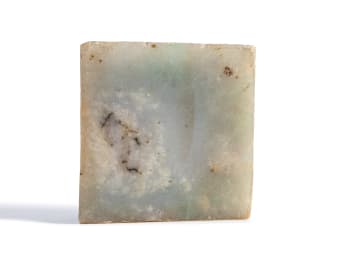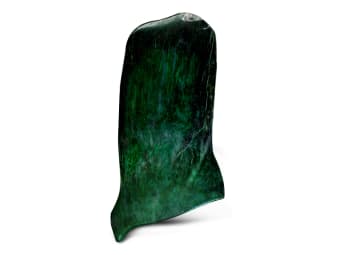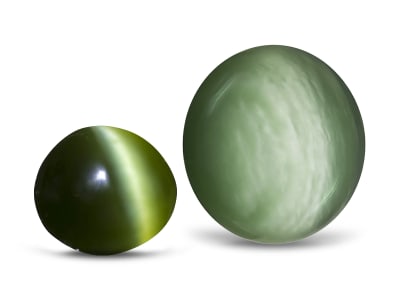People are often confused by the similar terms jade and jadeite – let’s explore the correct applications for these terms.

In 1863, French Scientist Alexis Damour was the first to confirm that each had differing chemistry. Prior to this the Chinese noted the differences based on the slight variations in hardness – nephrite jade being a ‘soft’ jade and jadeite jade being a ‘hard’ jade.
The word ‘jade’ is a term that the Chinese and other cultures have used for centuries, historically using it to describe any gem that had a ‘jade like’ appearance (even jade simulants) similar to the time in history when all red gems were once called rubies! The modern science of gemology has now made it possible to distinguish the true ‘family’ of jades, jadeite jade and nephrite jade, based on their chemical composition.
Jade Basics
Jade is the name given to two similar rocks jadeite (jade) and nephrite (jade). They both belong to the jade family and have a similar structure – belonging to the monoclinic crystal system – but differing chemical composition, and slightly differing optical properties. Both jadeite (jade) and nephrite (jade) are individual metamorphic rocks made up of tiny, tightly interlocking mineral crystals. This makes jadeite and nephrite exceptionally tough and resistant to chipping and breaking. A combination of great toughness and subtle beauty makes Jade ideally suited to carve or fashion into beads and cabochons.
Did you know... Both jadeite jade and nephrite jade are found in more locations than just China and Burma. They are mined all over the world!
What is jadeite jade?
Jadeite is the rarer of the two jades since its interlocked crystalline structure and chemistry produces a tough structure, intense colors and smooth, glassy finishes. Jadeite jade is most often used in jewelry and fits the criteria for fine gemstones because of its beauty, durability and rarity. Additionally, jadeite jade is found in a range of colors that includes translucent, almost transparent and its famous green known as “Imperial Jade”. It is also found in a wide variety of shades that include beautiful greens, yellow-greens, purples, oranges and blacks.

What is nephrite jade?
Nephrite jade is often used in carvings since it’s tough but easier to cut than jadeite. Nephrite's toughness is caused by its physical structure of felted and interlocking fibers, making it dense and resistant to damage. It is also found in a range of colors from pure white to green and even black, and nephrite can often appear translucent to opaque. White nephrite was once highly prized by Chinese emperors and is one of the rarest minerals on earth. Many of humanity’s earliest tools, dating as far back 5,000 years, were crafted of nephrite jade.

How can you tell the difference?
Professional analysis is the only reliable way to identify jadeite (jade) or nephrite (jade). Since jade can be easily color-enhanced and imitated, buyers and collectors should seek help from a reliable source to ensure they get the right gemstone.
Fun Facts
- For thousands of years, the Chinese have revered jade as the “Stone of Heaven”.
- Both jadeite jade and nephrite jade can be stronger than most steel.
- Jadeite and nephrite can scratch gold, platinum and silver.
- Jade is a 6.5 (Nephrite) to 7 (Jadeite) on the Mohs Scale and can be scratched by harder gemstones like diamonds and sapphires, so store it with care.

Conclusion
Jadeite jade and nephrite jade both have the beauty to become treasured possessions and jewelry with sturdy durability that will last many years.

